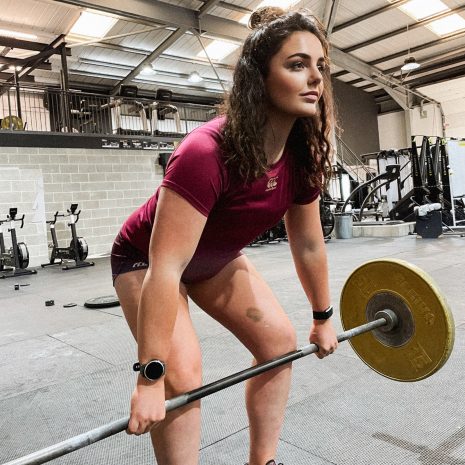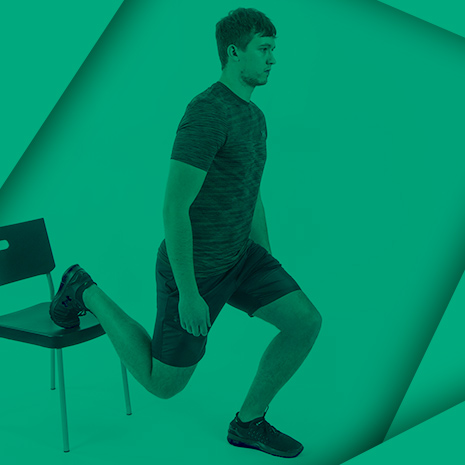We have teamed up with esteemed Chartered Physiotherapist, Neil Aitken to give you high-quality information on the most common Rugby injuries and how to best recover from them. If there’s a particular injury you’d like us to cover with Neil’s help, get in touch with us on social media (Facebook | Twitter).
The knee is a very complex part of the body, it is quite fragile which makes them extremely prone to injury. Because of this, knee-related injuries are one of the most common problems experienced by rugby players. In this article, we answer some of the most commonly asked questions rugby players have after sustaining a knee injury. If you are looking for more detailed information on knee injuries and how to recover from them, check out our Comprehensive Recovery Guide for Knee Injuries.

Quick links
- What ligaments are in the knee?
- What is the most common knee injury?
- What causes knee problems?
- How are knee problems diagnosed?
- Will I need surgery for my knee problem?
- How will it be decided if I need surgery or not?
- How can you prevent knee problems?
- What types of exercise are best for people with knee problems?
What ligaments are in the knee?

- Anterior cruciate ligament
- Posterior cruciate ligament
- Medial Collateral ligament
- Lateral collateral ligament
What is the most common knee injury?
- The most common ligament injury is to the medial collateral ligament which supports the inside of the knee. It is possible to injure the medial meniscus (cartilage) at the same time. A ‘terrible triad’ is an injury to the medial collateral and anterior cruciate ligaments along with the medial meniscus. Other injuries can involve the patellar tendon, the bursa (fat pad) that sits between the patellar tendon and the front of the tibia (shin bone), the patella itself can cause pain, as can the hamstring tendons as they cross the knee joint.
What causes knee problems?
- Movements involving twisting will commonly occur with a ligament or meniscal injury. More gradual injuries can be due to muscle weakness in the quadriceps or hamstrings. Glute and calf strength can also be a factor with knee injuries. Ankle stiffness can also result in a gradual onset of knee pain. In general strength is the key factor for preventing knee injuries. Particularly quadriceps and hamstring strength. The quadriceps to hamstring ratio should also be no lower than 80%.
How are knee problems diagnosed?
- Ligament injuries are diagnosed by the history of the mechanism of injury, often involving a twist of the knee. Swelling will be profuse and it will have been immediate. A physio or doctor will perform stress tests on the different ligaments to assess for pain and also laxity. The ligament may be lax but still have an ‘end feel’ where motion will come to a stop. This is a grade II strain. A grade III strain is a rupture and the laxity will be marked with no ‘end feel’ from the ligament.

- Meniscal injuries are again diagnosed by the mechanism of injury. Swelling will take longer to appear, typically taking a few hours. Performing a deep squat will be painful and full range not possible. It will be painful to palpate along the joint line at the top of the tibia (shin bone). A test called the McMurrays procedure will produce pain and possibly a clunk. The patient may be experiencing locking or giving way with the knee.
Will I need surgery for my knee problem?
- Most ligament injuries will resolve with rest and rehab. A full rupture may require surgery, but can sometimes still be treated conservatively. Minor cartilage injuries will also resolve with rest and rehab. More severe tears, where locking of the knee and giving way are occurring, may require surgery.
How will it be decided if I need surgery or not?
- If a full ligament tear is suspected or for more severe cartilage injuries you may be referred for an MRI scan.
How can you prevent knee problems?
- The best prevention is to maximise your strength, particularly of the quadriceps and hamstrings.
What types of exercise are best for people with knee problems?
- Non impact cardio exercises such as the bike or elliptical trainer. A graded strengthening program for quadriceps and hamstrings.
About the author
Neil Aitken is a Chartered Physiotherapist with a private clinic in Edinburgh. He has previous experience as a senior physiotherapist in the NHS and provided physio for one of the top amateur rugby teams in Scotland. He is highly evidence-based having completed a Post Grad in Musculoskeletal Physiotherapy gaining membership to the MACP, one of the most highly respected qualifications within physiotherapy.
Website: http://www.neilaitkenphysio.co.uk/
Facebook: https://www.facebook.com/neilaitkenphysio/
Twitter: @aitkenphysio

Please note, this article is intended to serve as a guide for general information only. Injuries should be assessed by a qualified specialist such as a physiotherapist or doctor. When you sustain an injury, there are always complicating factors that may need to be assessed and addressed by a professional.




Comments